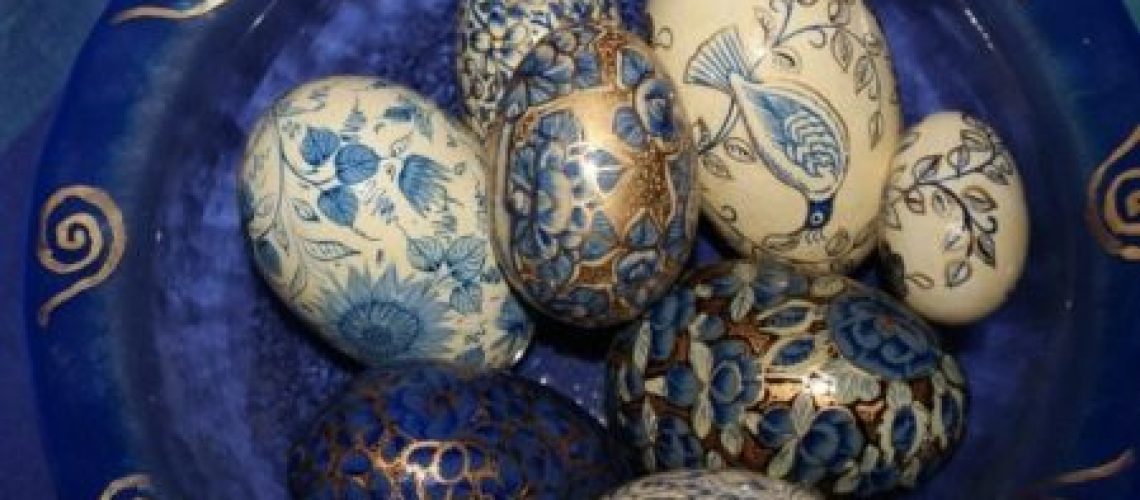“These I have loved:
White plates and cups, clean-gleaming,
Ringed with blue lines; and feathery, faery dust;
Wet roofs, beneath the lamp-light; the strong crust
Of friendly bread; and many-tasting food;
Rainbows; and the blue bitter smoke of wood…”
~ from The Great Lover, Rupert Brooke, 1887-1915
This excerpt from Rupert Brooke’s poem, The Great Lover, captures how seemingly small things can encompass joy. I recognize many if not all of the items contained in The Great Lover—from “the cool kindliness of sheets” to “blue-massing clouds”—but of course I have a list of my own…

The color blue informs it, because I love the changeable blues of ocean, rivers, and sky, a love that spills over into the blue dart of a dragonfly and the flash of a kingfisher by a summer river. The blues of lapis lazuli, turquoise, and sapphire also beguile, just as the contrast of blue-and-white—whether white caps on the ocean, or a Hokusai print, or Cornish kitchenware—is an enduring delight.
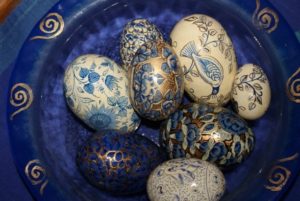
I’ve begun with blue since it’s so ubiquitous because of sky and water, but quickly realized that I could write this post on color alone. I love all color in its many manifestations—although the predominant colors of the natural world, the blues and the greens, are probably my favorites. Nonetheless I do find it difficult to pass by any vibrant display of color, whether in nature or art, in a book on the subject or a fabric display—not unlike Garfield encountering a patch of sunshine, although generally I remain awake. 😉
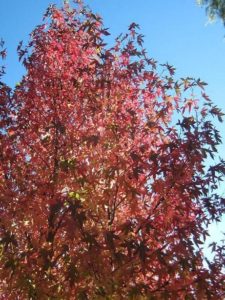
From the colors of the natural world to the natural world itself: it’s not just the blues and the greens, but the sounds of water flowing and the crash of ocean waves, a dolphin in the sea or bird cleaving the sky, the sound of bees in lavender and the spiky flowers themselves, with their dusty scent of summer.
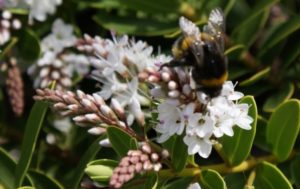
From a thunderstorm rumbling across land or ocean, to the acrid scent of earth when the first raindrops fall after a long dry spell, to dew glittering on a spider’s web, the natural world is full of a beauty that provokes delight and brings joy. I know I am not alone in feeling this, because Gerard Manley Hopkins is another poet whose work speaks to these emotions:
“Glory be to God for dappled things –
For skies of couple-colour as a brinded cow
For rose moles all in stipple upon trout that swim;
Fresh-firecoal chestnut-falls; finches’wings”
~ Gerard Manley Hopkins, 1844 – 1889
The natural world can also be brutal and as full of terror as delight, but the juxtaposition has power and I find awareness of the joy helps counterbalance the harshness—not least the plebeian persistence of dandelion or convolvulus in our wastelands of concrete and asphalt…
Whether natural or built, sometimes it’s necessary to shut the world out, which is when other joys make their presence felt: making food to share (which like Cat Rambo, I too really enjoy) with friends, family—and sometimes strangers, too, encountered on highways and byways. Of course, they don’t remain strangers thereafter! ☺
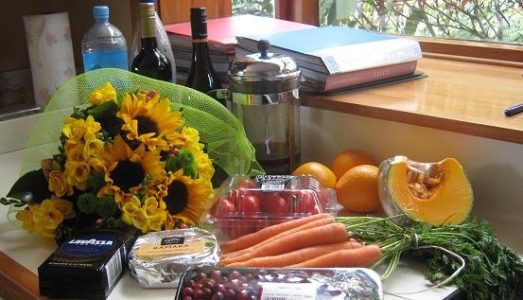
Whether with or without companionship, uncomplicated joys such as staying close by the fire on a cold night, or reading a great book in a sunshiny spot, are hard to beat. Something many of these experiences have in common is being present to the moment, which I suspect may be the kernel of where their joy lies, i.e. we are not only relaxed, but regrets over the past and fears for the future are both banished.

Perhaps it’s not surprising, then, that when I am immersed in writing I also connect to a well of joy, the components of which include the magic and satisfaction of the creative process. Even when a story or characters are recalcitrant (which they very often are, alas!) the process of storytelling itself remains joyful at its core. Once again, too, the much-discussed exigencies of the writing life, together with all the attendant fears that every artist probably recognizes—you know, that the work-in-progress will not be “good enough” and that no one will want to read it, let alone buy it etc etc—are kept at bay if not outright banished by “the moment now” of telling the tale and writing the story.
For me, though, the moment of sheer unremitting joy when I typed “The End” on the manuscript of Daughter Of Blood (The Wall Of Night Book Three) is one I will never forget.
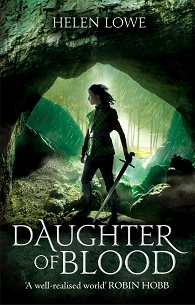
 Helen Lowe is a teller of tales and purveyor of story, chiefly by way of novels and poetry; she also blogs and occasionally interviews fellow writers. Her first novel, Thornspell (Knopf), was published to critical praise in 2008. The second, The Heir of Night (The Wall Of Night Series, Book One) won the Gemmell Morningstar Award 2012, and the sequel, The Gathering Of The Lost, was shortlisted for the Gemmell Legend Award in 2013. Daughter Of Blood (Book Three), was published in 2016 and Helen is currently writing the final novel in the series. She posts regularly on her “…on Anything, Really” blog, monthly on the Supernatural Underground, and is also on Twitter: @helenl0we.
Helen Lowe is a teller of tales and purveyor of story, chiefly by way of novels and poetry; she also blogs and occasionally interviews fellow writers. Her first novel, Thornspell (Knopf), was published to critical praise in 2008. The second, The Heir of Night (The Wall Of Night Series, Book One) won the Gemmell Morningstar Award 2012, and the sequel, The Gathering Of The Lost, was shortlisted for the Gemmell Legend Award in 2013. Daughter Of Blood (Book Three), was published in 2016 and Helen is currently writing the final novel in the series. She posts regularly on her “…on Anything, Really” blog, monthly on the Supernatural Underground, and is also on Twitter: @helenl0we.

